Kinetic Interaction between an Electron Flow with a Wide Velocity Spread and a Short-Adjusted Slipping Wave Pulse at the Cherenkov Resonance
Abstract
1. Introduction
2. Basic Equations and Analysis of Electron Motion on the Phase Plane
2.1. Basic Equations
2.2. Motion of Electrons on the Phase Plane with Zero Slippage
2.3. Motion of Electrons on the Phase Plane with Non-Zero Slippage
3. Simulation of Electrons with a Short Adjusted Wave Pulse
3.1. Normalized Equations
3.2. Violation of the Symmetry of the Interaction of Different Electron Fractions with a Wave Pulse with Small Slippage Factors
3.3. Large Slippage Factors and the “Non-Resonant” Reflection
4. Discussion and Conclusions
Author Contributions
Funding
Data Availability Statement
Conflicts of Interest
References
- Zhou, C.; Li, W.; Thorne, R.M.; Bortnik, J.; Ma, Q.; An, X.; Zhang, X.-J.; Angelopoulos, V.; Ni, B.; Gu, X.; et al. Excitation of dayside chorus waves due to magnetic field line compression in response to interplanetary shocks. J. Geophys. Res. 2015, 120, 8327. [Google Scholar] [CrossRef]
- Hallinan, G.; Antonova, A.; Doyle, J.G.; Bourke, S.; Brisken, W.F.; Golden, A. Rotational modulation of the radio emission from the M9 dwarf TVLM 513–46546: Broadband coherent emission at the substellar boundary? Astrophys. J. 2006, 653, 690. [Google Scholar] [CrossRef]
- Stepanov, A.; Zaitsev, V. On the Origin of Persistent Radio and X-ray Emission from Brown Dwarf TVLM 513-46546. Universe 2022, 8, 77. [Google Scholar] [CrossRef]
- Hankins, T.H.; Eilek, J.A. Radio emission signatures in the crab pulsar. Astrophys. J. 2007, 670, 693. [Google Scholar] [CrossRef]
- Yang, H.; Dang, S.; Zhi, Q.; Shang, L.; Xu, X.; Zhang, D.; Xiao, S.; Zhao, R.; Dong, A.; Liu, H.; et al. Single Pulse Studies of PSR B0950+08 with FAST. Universe 2023, 9, 50. [Google Scholar] [CrossRef]
- Mikhailovskii, A.B. Theory of plasma instabilities. In Instabilities of a Homoegeneous Plasma; Consultants Bureau: New York, NY, USA; London, UK, 1974. [Google Scholar]
- Melrose, D.B. Instabilities in Space and Laboratory Plasmas; Cambridge University Press: Cambridge, UK, 1989. [Google Scholar]
- Bespalov, P.A.; Savilov, A.V. Amplification of a slipping quasi-monochromatic wave pulse by an electron flow with a wide velocity spread. Phys. Plasmas 2021, 28, 093303. [Google Scholar] [CrossRef]
- Bespalov, P.A.; Savina, O.N. An excitation mechanism for discrete chorus elements in the magnetosphere. Ann. Geophys. 2018, 36, 1201. [Google Scholar] [CrossRef]
- Bespalov, P.A.; Savina, O.N. An excitation mechanism of electromagnetic pulses by relativistic electrons in the brown dwarfs rarefied magnetosphere. Mon. Not. R. Astron. Soc. 2018, 480, 4761. [Google Scholar] [CrossRef]
- Bespalov, P.A.; Savina, O.N. Excitation of the main giant pulses from the Crab pulsar. Mon. Not. R. Astron. Soc. 2020, 498, 2864. [Google Scholar] [CrossRef]
- Bespalov, P.A.; Savina, O.N.; Cowley, S.W.H. The beam pulse amplifier in space and laboratory plasmas. Results Phys. 2020, 16, 103004. [Google Scholar] [CrossRef]
- Helliwell, R.A. Whistlers and Related Ionospheric Phenomena; Stanford University Press: Stanford, CA, USA, 1965; Chapter 3. [Google Scholar]
- Stix, T. Waves in Plasma; American Institute of Physics: New York, NY, USA, 1992; Chapter 2. [Google Scholar]
- Bespalov, P.A.; Trakhtengerts, V.Y. Cyclotron instability of the Earth radiation belts. In Reviews of Plasma Physics; Consultants Bureau: New York, NY, USA, 1986; Volume 10, pp. 155–292. [Google Scholar]
- Ginzburg, N.S.; Sergeev, A.S.; Novozhilova, Y.V.; Zotova, I.V.; Rosenthal, R.M.; Phelps, A.D.R.; Cross, A.W.; Aitken, P.; Shpak, V.G.; Yalandin, M.I.; et al. Experimental observation of Cherenkov superradiance from an intense electron bunch. Opt. Commun. 2000, 175, 139–146. [Google Scholar] [CrossRef]
- Ginzburg, N.S.; Golovanov, A.A.; Zotova, I.V.; Malkin, A.M.; Tarakanov, V.P. Undulator superradiance effect and its applicability for the generation of multimegawatt terahertz pulses. J. Exp. Theor. Phys. 2014, 119, 632–640. [Google Scholar] [CrossRef]
- Kuzikov, S.V.; Savilov, A.V. Regime of “multi-stage” trapping in electron masers. Phys. Plasmas 2018, 25, 113114. [Google Scholar] [CrossRef]
- Lundin, R.; Guglielmi, A. Ponderomotive forces in cosmos. Space Sci. Rev. 2006, 127, 1–116. [Google Scholar] [CrossRef]
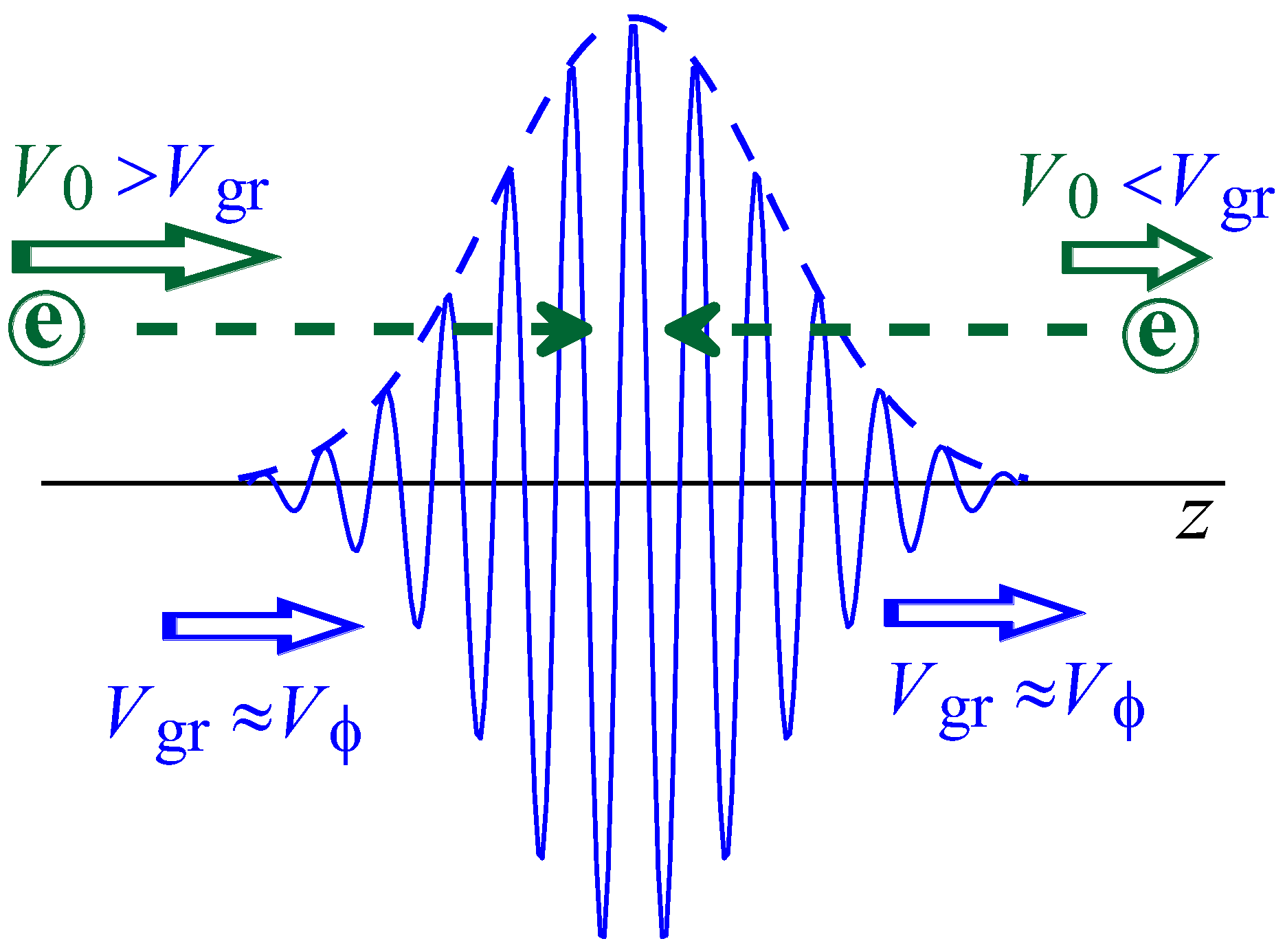
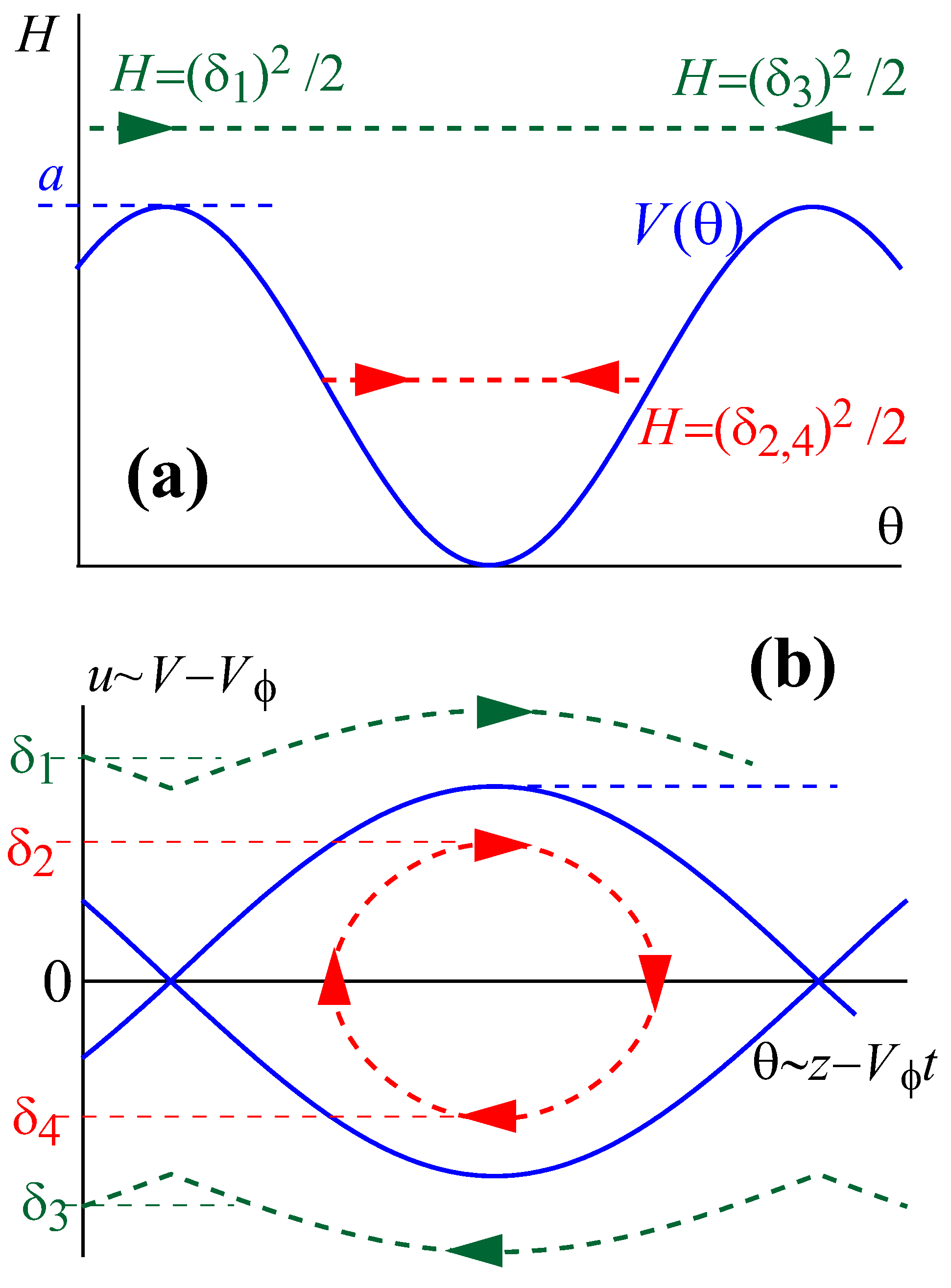

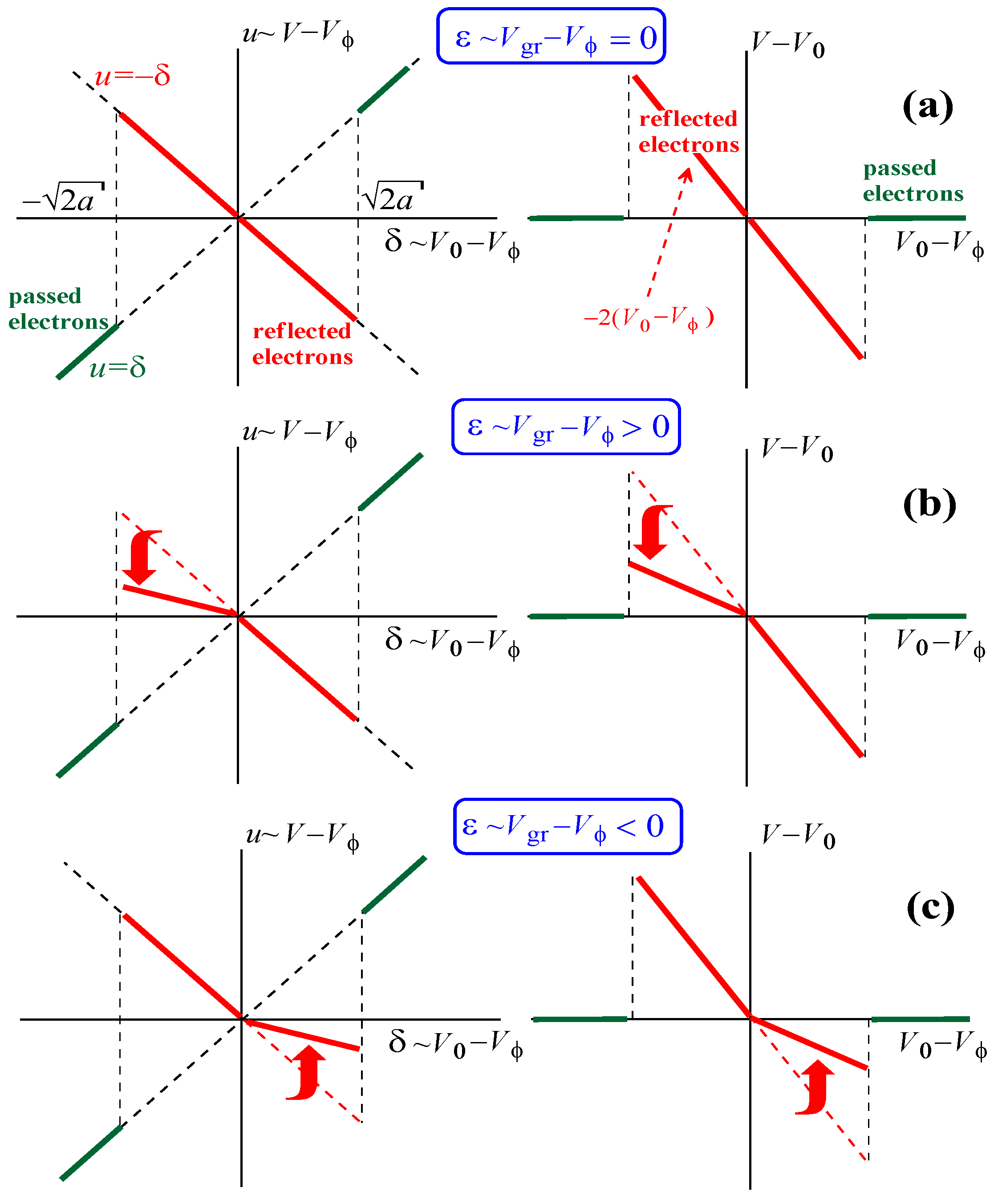
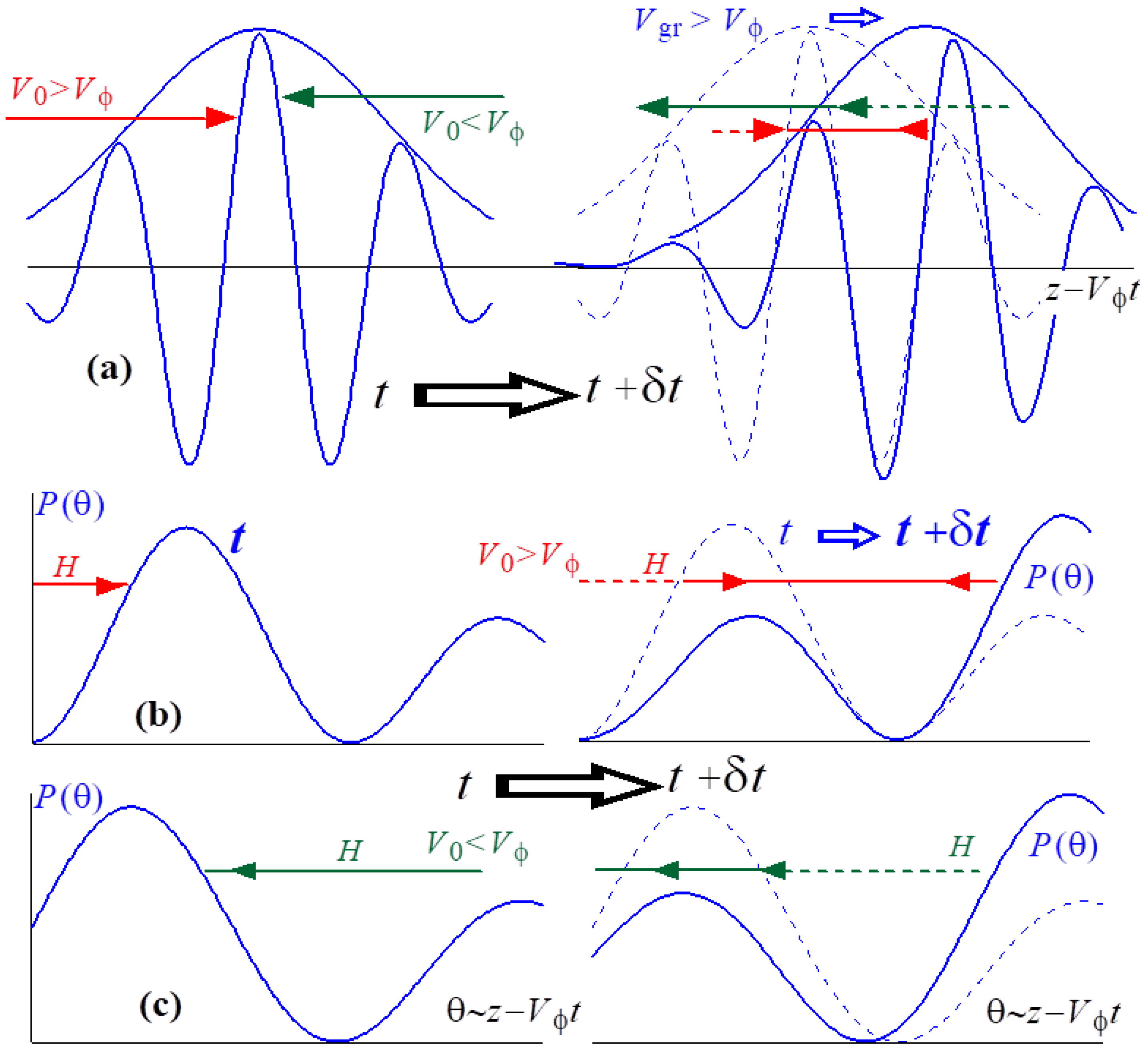
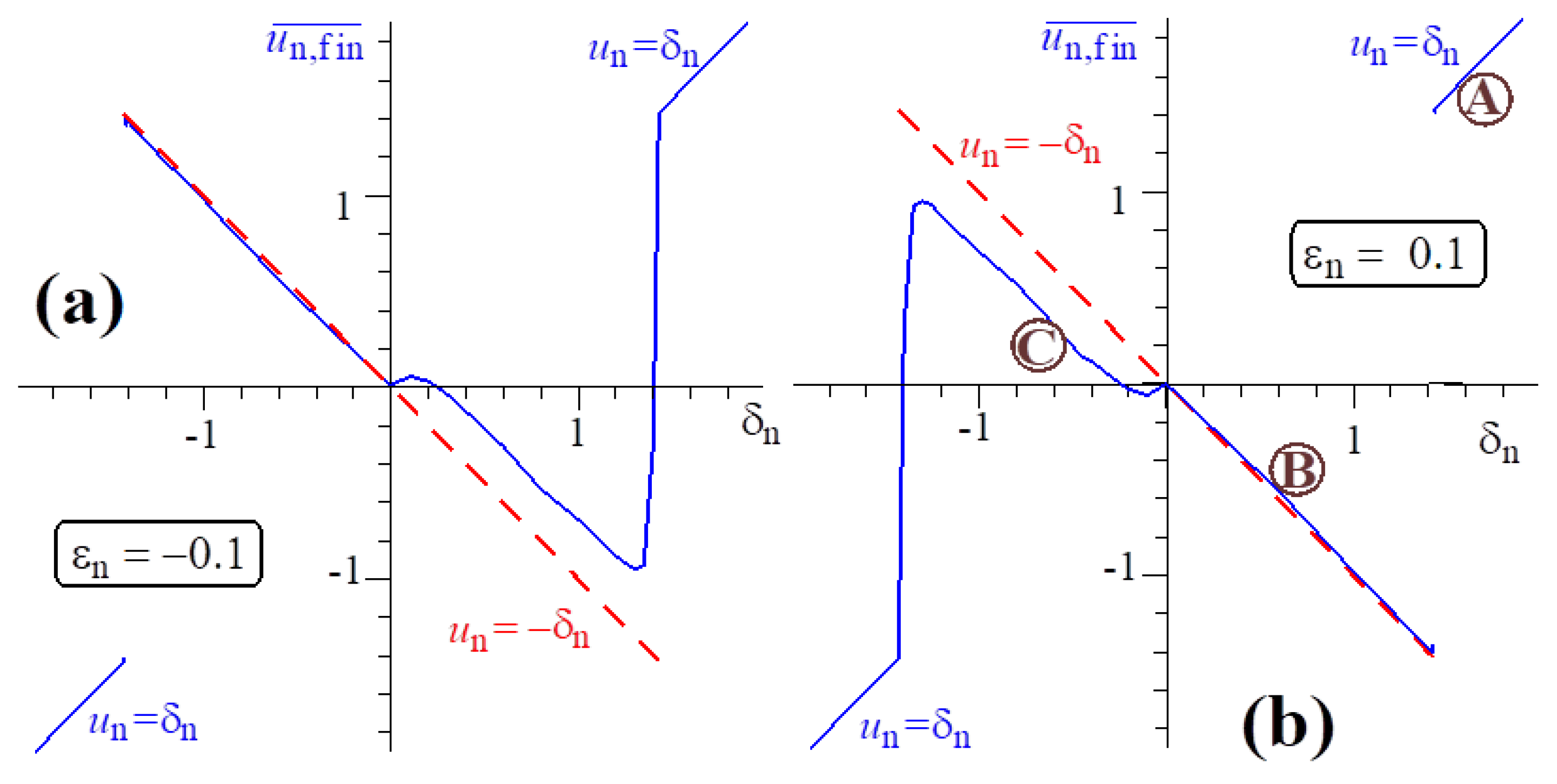
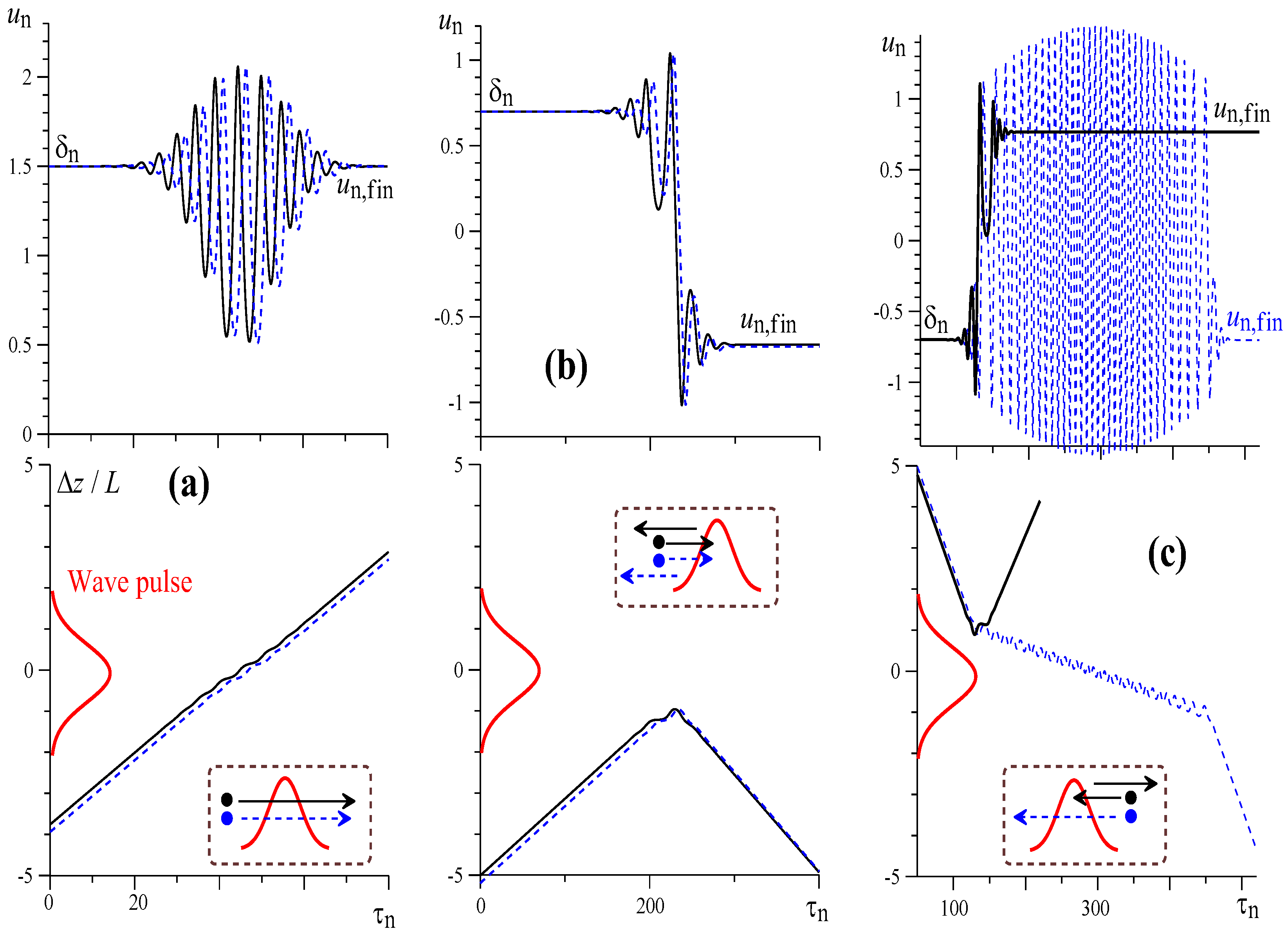
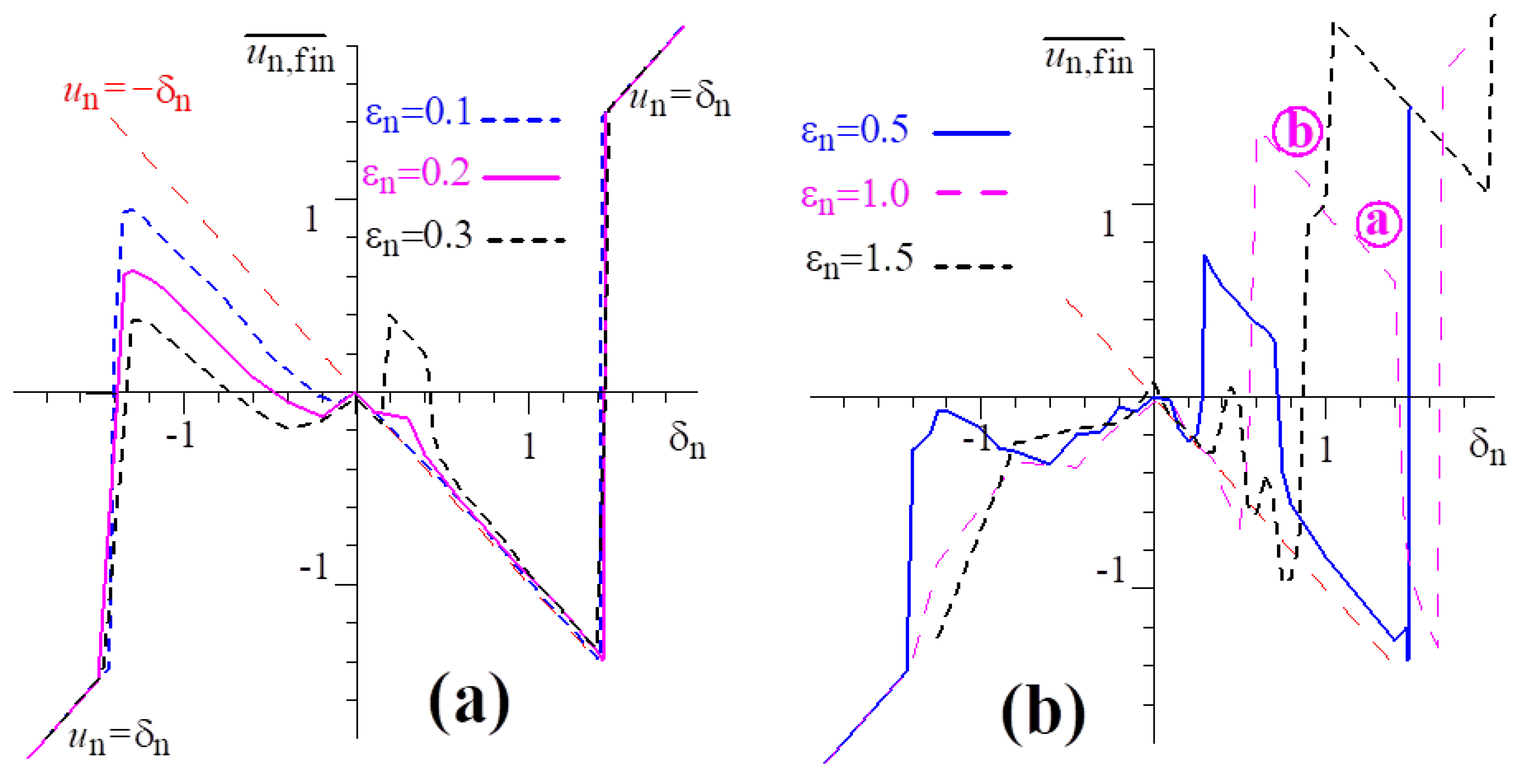

Disclaimer/Publisher’s Note: The statements, opinions and data contained in all publications are solely those of the individual author(s) and contributor(s) and not of MDPI and/or the editor(s). MDPI and/or the editor(s) disclaim responsibility for any injury to people or property resulting from any ideas, methods, instructions or products referred to in the content. |
© 2023 by the authors. Licensee MDPI, Basel, Switzerland. This article is an open access article distributed under the terms and conditions of the Creative Commons Attribution (CC BY) license (https://creativecommons.org/licenses/by/4.0/).
Share and Cite
Bespalov, P.; Kuleshova, V.; Savilov, A. Kinetic Interaction between an Electron Flow with a Wide Velocity Spread and a Short-Adjusted Slipping Wave Pulse at the Cherenkov Resonance. Symmetry 2023, 15, 838. https://doi.org/10.3390/sym15040838
Bespalov P, Kuleshova V, Savilov A. Kinetic Interaction between an Electron Flow with a Wide Velocity Spread and a Short-Adjusted Slipping Wave Pulse at the Cherenkov Resonance. Symmetry. 2023; 15(4):838. https://doi.org/10.3390/sym15040838
Chicago/Turabian StyleBespalov, Peter, Vitalia Kuleshova, and Andrei Savilov. 2023. "Kinetic Interaction between an Electron Flow with a Wide Velocity Spread and a Short-Adjusted Slipping Wave Pulse at the Cherenkov Resonance" Symmetry 15, no. 4: 838. https://doi.org/10.3390/sym15040838
APA StyleBespalov, P., Kuleshova, V., & Savilov, A. (2023). Kinetic Interaction between an Electron Flow with a Wide Velocity Spread and a Short-Adjusted Slipping Wave Pulse at the Cherenkov Resonance. Symmetry, 15(4), 838. https://doi.org/10.3390/sym15040838






